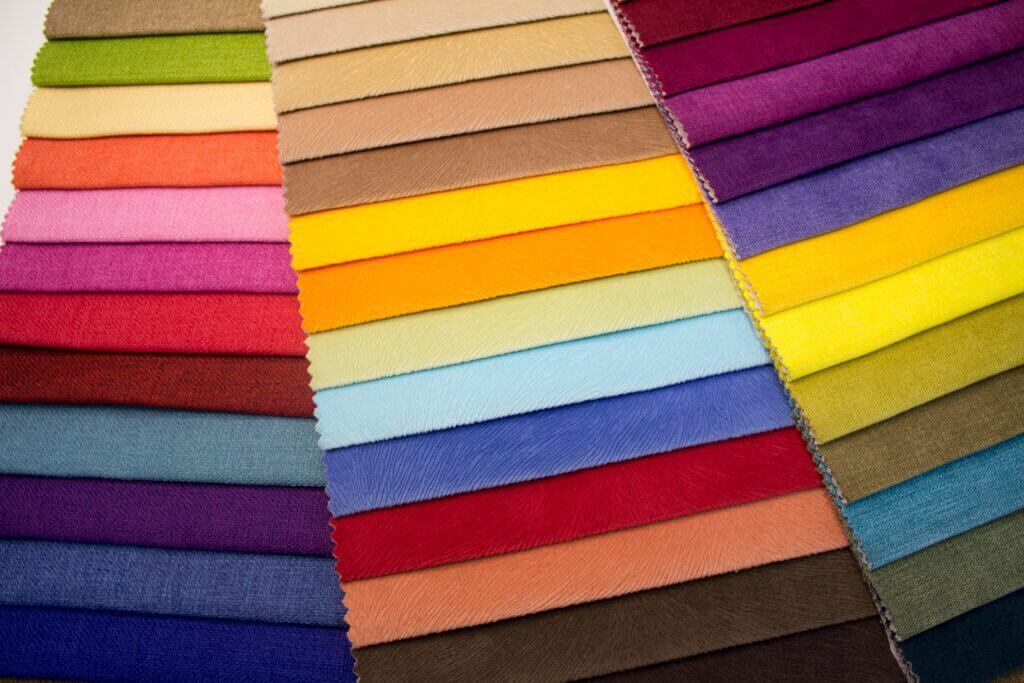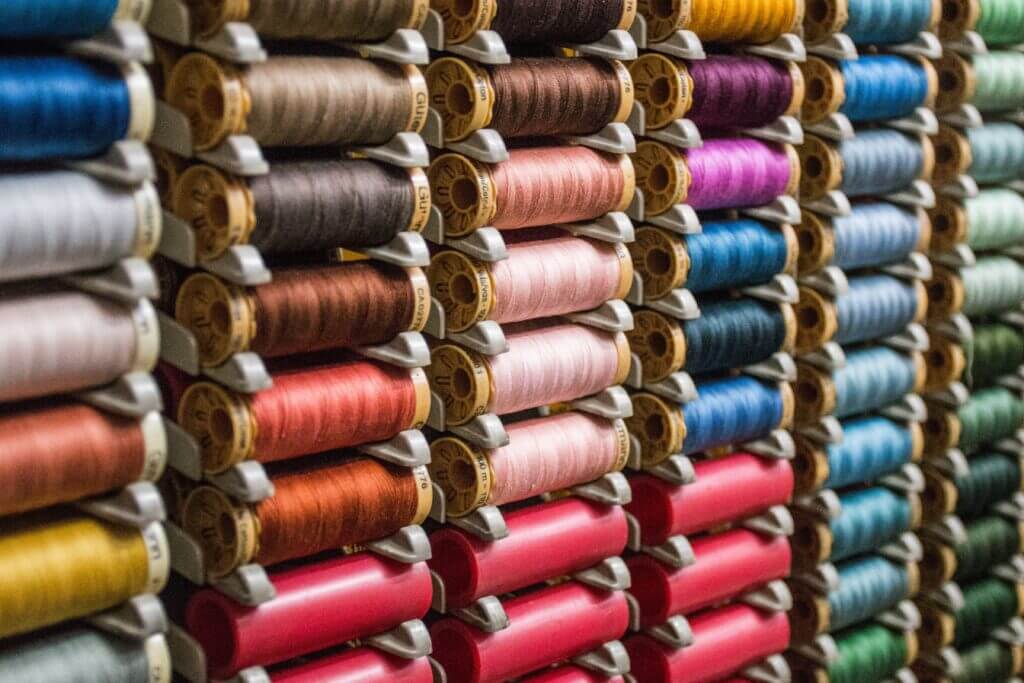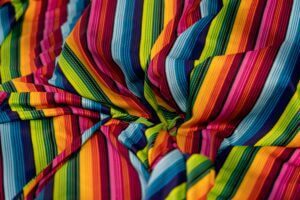Understanding the nuanced distinctions between viscose and cotton can be vital for selecting appropriate products and equipment. Despite being fundamentally different, these materials offer unique advantages and present specific challenges that are integral to the user’s comfort and convenience.
Cotton, an organic fibre from cotton plants, has been cherished for generations due to its soft texture, robust nature, and breathability. Cotton’s innate ability to manage heat and moisture makes it a versatile choice for bedding, particularly appealing to those in varied climates. Nevertheless, when considering cotton bedding, you should contemplate the material’s tendency to shrink and fade and its propensity to wrinkle.
Conversely, viscose (rayon) is a semi-synthetic fibre derived from cellulose, typically procured from wood pulp. With its glossy appearance, excellent draping capacity, and economic viability, viscose has gained considerable traction in the bedding industry. It provides excellent moisture-wicking properties, catering to individuals who favour a cooler sleep environment. However, the longevity and quality of viscose products may be compromised due to their lower durability and likelihood to pill.
Considering the manufacturing methodologies, inherent attributes, and potential setbacks associated with cotton vs viscose is paramount. This knowledge empowers consumers, enabling them to make wise choices about their bedding requirements, whether they are preparing for a mountainous adventure or simply seeking optimum sleep comfort.

What Is Cotton?
Cotton is the leading natural fibre in the world, playing a significant role in the production of mattresses and fabrics. Cotton plants flourish in various regions across the globe, and people cultivate cotton from their seedpods. China, India, and the United States are the primary producers of this crop.
Cotton possesses unique properties, enhancing its popularity in numerous applications. One remarkable feature is its heightened wet durability, offering exceptional absorption and strength even in damp conditions. As a result, cotton is ideal for items necessitating high wet strength, outperforming other materials like viscose under regular wash cycles.
The creation of cotton fabric is a detailed process. Initially, textile mills acquired substantial amounts of raw cotton bales. These bales undergo several phases of weaving and knitting, twisting the fibres into threads that ultimately become yarn. Following this transformation, the yarn threads are woven or knitted again to produce the final cloth. This intricate journey from plant to fabric reflects cotton’s versatility and resilience, ensuring its enduring relevance in the textile industry, whether for alpine camping gear or everyday household items.
What Is Viscose?
Viscose, a regenerated cellulose fibre, balances natural and synthetic materials. Despite some varieties being derived from bamboo, it is considered a manufactured fibre. Viscose’s popularity stems from its ability to emulate the luxurious look and feel of more expensive fabrics without the hefty price tag.
Distinct properties distinguish viscose from other materials. Its capacity for dye absorption ensures vibrant, long-lasting hues. The fabric also boasts a silky luster, creating an eye-catching contrast with other textiles. Despite these luxurious characteristics, viscose remains exceptionally soft, providing a comforting sensation against the skin, which is particularly appealing in bedding. Furthermore, viscose exhibits superior draping qualities, enhancing its aesthetic appeal.
The production process for viscose begins with the cellulose from bamboo plants. Chemical solutions dissolve this cellulose to create a pulp-like substance. Manufacturers then spin this substance into fibres and weave it into threads. The chemical solvents typically employed in this process include sulfuric acid, carbon disulfide, and sodium hydroxide. Despite its complex production process, the result is a versatile fabric that proves popular in various applications, from outdoor adventure gear to luxury bedding.
Environmental Impact of Viscose
In the face of alarming statistics, such as the average US citizen discarding approximately 70 pounds of textiles annually and textile waste occupying nearly 5% of landfill space. The shift towards eco-friendly fabrics is crucial. Among these, viscose stands out due to its biodegradability, derived from renewable resources. However, the environmental impacts of its production process must be considered.
Deforestation, a pressing environmental issue, stems from harvesting wood cellulose for viscose production. Numerous fashion brands have collaborated with viscose manufacturers who obtain their wood cellulose from sustainably-managed forests to mitigate this. This practice ensures the continued availability of this natural resource without causing environmental harm.
Air emissions from viscose manufacturing sites sometimes contain harmful chemicals like hydrogen sulfide. Addressing this, some manufacturers have adopted the lyocell process, which generates fewer environmentally toxic byproducts. Viscose produced using this method, known as lyocell, is another rayon often used to create cooling bed sheets.
Moreover, viscose production is water-intensive, potentially damaging this vital resource. Hence, in eco-friendliness, viscose fares better than synthetic fibres, but it still lags behind all-natural fibres. The environmental impact of viscose thus requires further innovation and sustainable practices to classify it as a green textile truly.
Cotton and Viscose: Key Differences

Differentiating between viscose and cotton is essential when selecting materials for various outdoor adventures. The nature of the fibre, its strength, its behaviour when wet, and its uses are crucial aspects to consider.
Viscose, a semi-synthetic fabric, contrasts sharply with the natural cotton fabric.
This difference extends to the strength of the fibre as well. While cotton fibres exhibit significant resilience, viscose fibres lack this robust quality. Additionally, cotton fibres fortify when wet, whereas viscose fibres deteriorate in strength upon moisture exposure. This discrepancy might influence the choice between the two materials, especially for uses involving regular exposure to water.
These fibres also diverge in their applications. Cotton, known for its absorbent quality, finds utility in cleaning and managing body fluids. Conversely, Viscose does not find a place in medical applications due to its relatively weaker nature.
Differences are evident even in their production processes. Cotton is harvested, cleaned, scoured, purified, and finished before drying and baling. On the contrary, viscose undergoes a more complex and extensive process. It begins with harvesting, debarking, and chipping, followed by chemical and hydra-pulping processing. After blending, screening, and cleaning, the wood pulp undergoes several steps, including steeping, shredding, ageing, xanthation, dissolution, ripening, straining, and degasification. After these stages, the material undergoes a wet spinning process, then drawing, stretching, and finishing before workers cut and bale the final product.
This contrast between viscose and cotton regarding their characteristics and manufacturing processes is instrumental in identifying the appropriate material for outdoor and mountainous applications.
Bamboo Viscose vs Cotton Socks: An Exploration of Comfort and Hygiene
When it comes to the selection of comfortable socks, bamboo viscose has been gaining considerable attention, emerging as an appealing alternative to traditional cotton. Hailing from a robust grass species, bamboo imbues an array of desirable qualities that may prompt a reconsideration of sock preferences.
One defining attribute of bamboo viscose is the presence of Bamboo Kun, an element not found in cotton. This compound actively combats foot odour by suppressing the growth of bacteria and fungi typically attracted to cotton. Consequently, socks made of bamboo viscose offer an added layer of hygiene and protection, mitigating unpleasant odours and maintaining foot health.
Further enhancing their allure, bamboo viscose socks are often more breathable than their cotton counterparts. This attribute ensures that feet remain cool and fresh, an invaluable benefit, particularly in warmer climates or during strenuous activities. Thus, bamboo viscose socks could answer those seeking comfort, hygiene, and breathability.
Bamboo Viscose vs Egyptian Cotton
In assessing the characteristics of Bamboo Viscose and Egyptian Cotton, it becomes clear that these fabrics present a set of unique benefits and features that align differently with varied consumer needs.
Durability is a trait shared by both. The longevity of these materials, with the potential to endure up to a decade and a half with appropriate maintenance, represents a commendable testament to their robustness.
Regarding tactility, bamboo viscose tends to emulate the smoothness of silk, albeit devoid of the slippery touch, creating a unique tactile experience. On the other hand, Egyptian cotton exudes a plush, opulent feel. Which is amplified as the thread count increases, lending an air of luxury.
Moreover, both fabrics showcase hypoallergenic qualities. Bamboo viscose, in particular, scores highly on this front, making it suitable for those prone to allergies. Egyptian cotton is also considered gentle on sensitive skin, with certain varieties possessing superior hypoallergenic properties.
Reviewing environmental impact, bamboo viscose emerges as the greener alternative. The fast-growing nature of bamboo, coupled with its low pesticide dependency, accords it with a lower ecological footprint. Conversely, cotton cultivation often necessitates using pesticides and other chemicals to counteract its natural pests, which can negatively affect the environment.
Lastly, the affordability of these fabrics is contingent upon an array of factors, leading to a wide price spectrum. Hence, a diligent comparative shopping approach is crucial to source the material that best suits one’s budget and requirements.
In essence, the choice between bamboo viscose and Egyptian cotton depends mainly on individual preferences, with aspects like texture, hypoallergenic attributes, ecological concerns, and pricing playing decisive roles.
Cotton and Viscose: A Close Look at Breathability Factors
In the realm of breathable fabrics, the comparison of viscose and cotton brings forth an intriguing dynamic.
Some enthusiasts tout viscose, also known as rayon, as an excellent material for dissipating body heat efficiently, particularly in elevated temperatures. This attribute of viscose primarily hinges on its unique drape, which facilitates rapid heat exchange between the body and the surrounding air.
Cotton, on the other hand, is renowned for its breathability and moisture-absorbing capacity. While it might lack the draping quality inherent to viscose, its ability to wick moisture away from the skin aids in maintaining dry, cool comfort.
However, a noteworthy distinction lies in the behaviour of these fabrics under damp conditions. Despite its breathability, viscose tends to lose strength when wet, a factor that could impair its breathability. Cotton, in contrast, retains its power even in moist states, potentially providing more consistent breathability compared to viscose under similar conditions.
The choice between viscose and cotton for breathable attire is nuanced, depending on factors like heat management, moisture absorption, and the fabric’s performance when wet.
Price Comparison
Several factors come into play when evaluating viscose and cotton from a cost perspective. Viscose typically has a lower production cost, which subsequently reflects in its retail price. Conversely, cotton tends to be pricier, with the worth attributed to using pesticides and other chemicals essential for maintaining the plant’s health.
As a general rule, cotton is often more expensive than viscose. While this may only hold at some times, in some stores, or with lower-quality cotton, it is a valuable guide when considering these materials from a price perspective.
Nevertheless, the price shouldn’t be the sole determining factor. The ultimate choice of fabric should hinge on its intended use. Cotton’s versatility offers more application options, making it a popular choice for various projects. On the other hand, viscose outperforms in terms of draping capabilities, making it the go-to choice when an exceptional drape is desired. Thus, both materials have a unique appeal in the outdoor gear and textile worlds. With cost and usage requirements driving the ultimate decision.
Final Thoughts: Weighing Up Viscose vs Cotton
In selecting the ideal bedding material, awareness of the available options’ characteristics, advantages, and disadvantages is crucial. Cotton, renowned for its versatility, performs admirably under various conditions. However, cotton may not be the most suitable choice for those mindful of budget constraints and moisture issues.
On the other hand, viscose provides a cost-effective alternative that does not compromise on luxury. Nonetheless, it carries a heavier environmental footprint and demands more caution during cleaning. Both these materials find extensive usage in contemporary bedding, and understanding their respective performance can prevent unnecessary inconvenience.
Thus, deciding between cotton and viscose depends heavily on individual preferences, financial considerations, and environmental concerns. Considering these factors can ensure a well-informed choice that aligns with the individual’s needs and the sustainability of the natural world, especially when venturing into the great outdoors.

Cotton vs Viscose – Frequently Asked Questions
Is Viscose Material Good Or Bad?
Amid the benefits that viscose brings to the table, potential buyers often express concerns about its limitations and environmental impact. Its capacity to absorb water and body oils readily can contribute to discolouration and diminishing marking. Over time, it maintains both its aesthetic appeal and structural integrity.
Moreover, the maintenance of viscose typically calls for dry cleaning only. As such, bedding like sheets and mattresses from this material might require more meticulous care and potentially expensive dry cleaning services. This aspect could present challenges for those seeking easy-to-care-for outdoor gear or bedding solutions, making cotton or other materials a potentially more practical choice. Thus, although viscose provides a budget-friendly and luxurious feel, consumers should know about these potential downsides to make the best selection.
Does Viscose Shrink?
The contrast in wet strength between cotton and viscose often leads to various questions from consumers. While cotton shows resilience even under moist conditions, viscose does not possess the same durability. Its fibres, vulnerable to moisture, may deteriorate, limiting its capacity to withstand regular washing cycles.
Consequently, viscose-based products are frequently recommended for dry cleaning only. This structural frailty necessitates careful reading of care labels when purchasing bedding, particularly for those planning outdoor adventures or activities involving exposure to wet conditions. Hence, understanding the limitations of each material helps in selecting the appropriate fabric that caters to one’s specific requirements and expectations.
Is Cotton or Viscose Cooler?
Understanding the thermal properties of viscose and cotton often emerges as a critical question for those making decisions about outdoor gear or bedding. Viscose, renowned for its superior draping qualities, may provide a cooling effect. Being a lightweight fabric, it facilitates the quick dissipation of body heat.
In contrast, the temperature regulation properties of cotton hinges mainly on the weaving method. Lightweight cotton fabrics may surpass viscose in providing a cooler experience. However, heavyweight cotton does not exhibit the same breathability or coolness as viscose.
Bedding made from bamboo-derived viscose may provide a cooler feel than its cotton counterparts, owing to bamboo’s inherent property of regulating body heat. Nevertheless, this does not imply that viscose bamboo is universally more comfortable than cotton bed sheets. The ability to weave cotton in diverse ways offers a wide range of comfort and coolness options, highlighting the importance of individual preferences when choosing the final material.
Is Cotton or Viscose Better?
Unveiling the subtle nuances between cotton and viscose is integral to making an informed choice. Some people might prefer natural fibres over synthetic or semi-synthetic variants, and evidence supports the merits of this preference.
With its soft and robust nature, cotton outperforms viscose on several fronts. Its versatility allows it to be woven in numerous ways, and it comes with the added benefit of easy laundering and dyeing. Despite viscose‘s strengths, such as wrinkle resistance and superior draping, its delicate nature can pose challenges.
Cotton tends to offer a better overall experience when it comes to wearability. The texture and durability of cotton, paired with its ease of care, often make it a more desirable choice, especially for those venturing into the great outdoors. Understanding these differences can help consumers make decisions that align with their specific needs.


